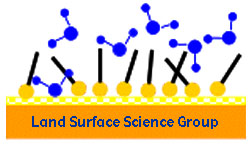Investigation of First Fuel Burned by LITD-FTMS of Soot Deposits
The area of fire investigation is largely dependent on the use of fire patterns and knowledge of available fuel loads to determine the cause and origin of a fire. In scenes where ignitable liquids are known to be present prior to the fire for possibly innocuous reasons, such as paint thinner and other common household supplies, it is potentially difficult to determine the order of ignition and whether the fire is incendiary in nature, or if the liquids became involved as part of an accidental fire. This suggests a need for the development of an analytical method to determine the order of ignition at a fire scene, providing fire investigators with more information about the order of events in a fire. Our research explores the applicability of a technique currently used in the analysis of many other types of samples, laser-induced thermal desorption coupled with Fourier transform ion cyclotron resonance mass spectrometry (LITD-FTMS), to the analysis of deposits from fire scenes.
In our research, the effect of laser power density on the observed spectra from gasoline-based deposits is explored. A shift toward higher m/z peaks in the observed spectra is observed with a decrease in incident power density. The spectra at the low laser power densities suggest that LITD-FTMS is a viable method for the analysis of soot surfaces, with potential for use with layered soot samples. The ability of this technique to differentiate between deposits from polyurethane foam, polystyrene, and gasoline is shown below.

Figure 1: Effect of incident laser power density on spectra from gasoline soot.
Polyurethane deposits are easily separable from those of gasoline and polystyrene based on peaks corresponding to common pyrolysis products. Separating the deposits of gasoline from polystyrene is subtler, due to the occurrence of common peaks, but the application of principle component analysis, as well as visible differences in spectral distribution, makes identification of the two fuel types possible. The analysis of two-layer soot samples is also being researched. Some samples show evidence of individual layer analysis with identifiable components. Other samples have extensive layer mixing, making identification of the fuel order or identity difficult.

Figure 2: Comparison of first laser shot for three fuels

Figure 3: Comparison of second laser shot for three fuels







